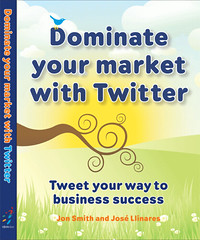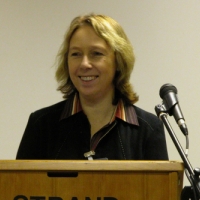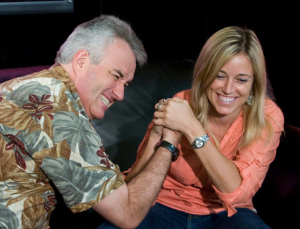Another successful SLA Europe event this evening, this time at the swanky venue of the Crowne Plaza Hotel, five minutes away from Blackfriars station.
The hot topic was Free vs Fee – the Future of News. And stemmed from the fact that most newspapers have offered their content via the Internet for free with the expectation that display advertising would create enough revenue to cover the cost of creating and distributing their content. However, with the continuing decline in physical newspaper sales and the softening of the display advertising market, news organisations are exploring new ways to charge for their digital content.
On the panel were Jeremy Lawson VP Sales, EMEA, Dow Jones & Company, Andrew Hughes – Commercial Director for the Newspaper Licensing Agency (NLA), Laurence C. Rafsky Ph.D. – CEO of Acquire Media and Laurence Kaye – Principal at Laurence Kay Solicitors. The panel was excellently moderated by Donald Roll – Managing Director, Europe for Alacra.
Here are my notes from the evening:
Don Roll introduced the evening by talking about the steep decline in newspaper circulation, the recent arrival of the first free quality newspaper in the form of the London Evening Standard, and how the NLA wants to ensure newspaper publishers receive payment for web content.
Andrew Hughes – NLA initiatives
NLA are moving towards creating a set of licences for commercial use of newspaper websites.
UK newspapers spend £1b a year in creating this content, which is quite different from paper published information. For example 31% of newspaper websites has never appeared in print.
The plan is that for those who charge for access to newspaper content will be charged by the NLA, who will also charge end user clients for access to content.
Existing licences will be extended and new ones created where necessary
e-Clips Web – Working to improve access to content by using newspaper CMS systems.
Laurence Kay – The legal view – 10 key points
1. Professional journalism, ‘trusted content’ and UGC (user generated content)
2. Change takes time! Business models and culture takes time to change.
3. Global Media / local copyright?
4. If content is going to be free, why does copyright matter? Provides the framework for access and usage rights.
5. B2B versus consumer copyrights
6. ‘Effects-based’ approach to copyright. Helps to work out how to apply rules to the real world. Look at the commercial impact of activities.
7. ‘Legal’ versus ‘Illegal’ content. When to take action or technical measures over infringements.
8. Who are the ‘intermediaries’ in the value chain? E.g. Where does Google fit in? Searched for or ‘scraped’ conent?
9. ‘Fair Use’. Big variations across Europe. United States has a broad definition. If the use is commercial is that no longer fair use?
10. We are still lacking 21st century infrastructure to cope with licensing and payments for use.
Laurence C. Rafsky – What do we mean by free?
Once freedom has been tasted there is no going back.
Value chain –
- professionally produced but given away selectively – e.g. advertiser supported
- Non-professional content
- Gifted professional content. E.g. Stephen King novel
- Free to some but not others
- Content that should not be free.
Two enemy camps
- Information wants to be free – the hippies
- Corporate suits who want to charge for everything
The solution will need to be a compromise.
A question for the NLA to consider:
Do you use copyrighted material for commercial gain without payment to content owners?
Do you use copyrighted material for commercial gain without permission from the content owners as we understand it?
The crux of the debate is between these two viewpoints.
Can we separate business use from personal use? Google don’t distinguish between the two.
Jeremy Lawson – Supporting publishers and their right to monetise their content.
Questions from the audience:
Did the newspaper industry start digging its own grave by giving away content?
New York Times started with some free and mainly fee access. They ended it because when compared pay per click ads versus pay for access would give ten times the revenue. But as ad revenues fall they may go back to first model.
Should be driven by economics.
Do you think news aggregators are a serious threat to publishers?
Links are fine, but extracts complicate the issue as readers may not link through to content. But as web content grows and newspaper content becomes a smaller fraction, increasing hits to newspaper sites lose their economic value to the publishers.
85% of newspaper traffic comes via Google. So should Google pay the majority share?
Is the Kindle from Amazon a potential future model for subscription access to newspaper content?
Disagreement – ability to break news up into selected streams for readers counts against Kindle model.
When will paper newspapers die?
Laurence C. Rafsky predicted that by 2030 newspapers would cease to exist in paper form as a mainstream product.
He compares their future to candles today – they will become a decorative only production.
As he pointed out, if you had a choice, why would you use paper for something that only has a value for a few hours, and then you need to scan it to create a digital version which can be archived.
B2B vs B2C
Issues about consumers within a business environment – now that the genie is out of the bottle, how do you get individuals in a corporate environment to accept paying for information.
The event was kindly sponsored by Dow Jones.
![]() My colleagues in Business Marketing have come up with a programme of events for next month called Web in Feb.
My colleagues in Business Marketing have come up with a programme of events for next month called Web in Feb.
 2010 has definitely been the year for
2010 has definitely been the year for  I’ve just read
I’ve just read  Episode one: From idea to business
Episode one: From idea to business As part of our continuing experimination with all things
As part of our continuing experimination with all things 

 As a loyal listener from their very first netcast, I feel honoured to have been selected as their email of the week in the latest show.
As a loyal listener from their very first netcast, I feel honoured to have been selected as their email of the week in the latest show.


